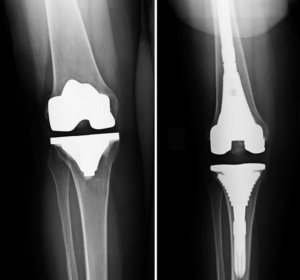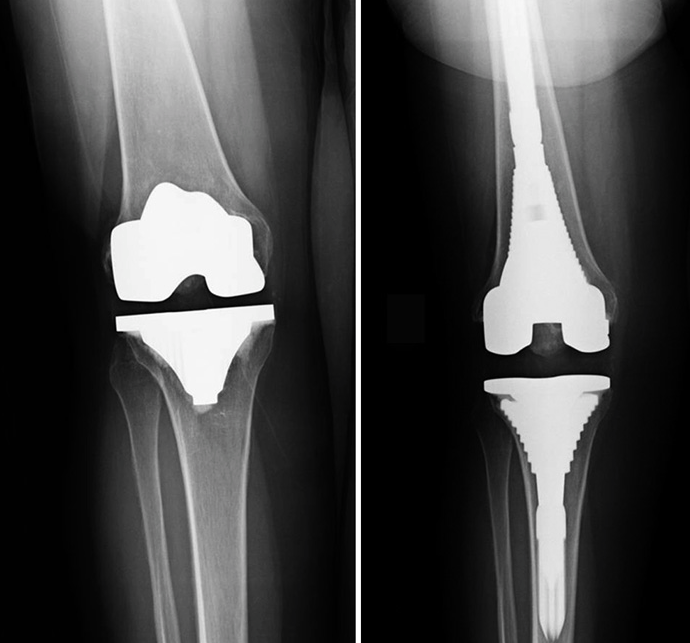Failure is a strong word, especially when it comes to your health. However, a total knee replacement (TKR), just like a healthy knee joint, can “fail” over time. It is important to know about primary and revision total knee replacement as well as reasons why your implant could fail and the possibility of a revision surgery in the future.
Primary: A TKR surgery for the first time on your knee joint.
Revision: A TKR surgery after a primary TKR has already been performed on the same knee joint.
Knowing the difference between a primary and revision TKR is important for patients to know. A healthy lifestyle will help patients avoid revision surgery and the consequences that may arise if revision is needed. Primary surgery is more straightforward and you can learn additional information about primary total knee replacement. Complications may lead to serious questions if revision TKR is needed to correct the primary surgery. Following are two reasons a revision TKR may be needed.
- Implant wear is a normal process that can gradually take place over many years after a primary TKR is performed. Just like in a healthy knee joint, knee implants are liable to normal wear, which may require a revision TKR. This wear and tear may include the implant loosening away from the bone. The cause of loosening is not always clear, but high-impact activities, excessive body weight, and wear of the plastic spacer between the two metal components of the implant are all factors that may contribute.
- Infection is a risk factor for both primary and revision TKR, although the risk of infection is slightly higher after a revision than after the primary surgery. According to the American Academy of Orthopaedic Surgeons, a revision TKR due to infection can be handled via different methods including:
- Debridement: In some cases, the bacteria can be washed out, the plastic spacer can be exchanged, and the metal implants can be left in place.
- Staged Surgery: In other cases, the implant must be completely removed to treat the infection. Your doctor will perform the revision in two separate surgeries. In the first surgery, the surgeon will remove the implant and place a temporary cement spacer in your knee for several weeks, which is treated with antibiotics to fight the infection. When the infection has been cleared, the surgeon will perform a second surgery to remove the cement spacer and insert a new implant. In general, removing the implant leads to a higher chance of curing the infection, but is associated with a longer recovery.

There are different types of revision surgery. In some cases, only one component of the implant must be revised. Other times, all three components—femoral, tibial, and patellar—need to be removed or replaced. When a primary implant is exchanged for a new implant during a revision TKR, there are differences in the implant shape, most notably the length of the stem on the metal components. The extra length of the stem provides increased stability for the patient after the revision TKR is performed.
According to a 2011 study titled “International survey of primary and revision total knee replacement” the average rate of combined primary and revision TKR surgery worldwide was 175 procedures/100,000 population while the average rate of revision TKR was 15 procedures/100,000 population.
Although it is unlikely to undergo a revision TKR, it is important to strive to live a healthy lifestyle every day, which will make preparing for either a primary or revision TKR much easier. Taking pride in a healthy lifestyle is especially important after you undergo a primary TKR in order to avoid a revision surgery as much as possible. Be sure to always consult a doctor when considering medical treatment, such as primary or revision total knee replacement, to discuss specific knee implants, treatment, and rehab.
Sign up for the free newsletter and receive the 2017 Knee and Hip Replacement Price Report.
